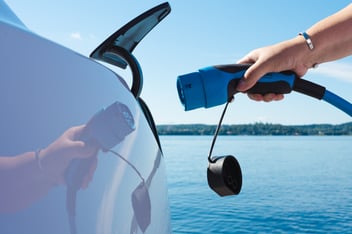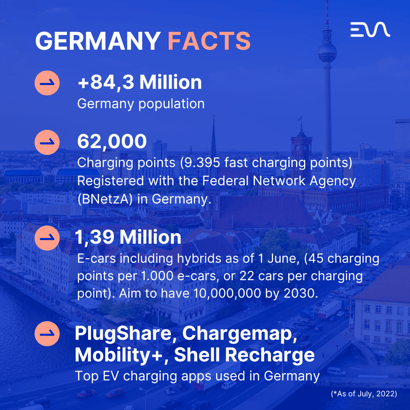
Industry Leaders EVA Global and United Call Centers (UCC) Collaborate to Support Electric Mobility Ecosystem Amid EVA Global’s Bankruptcy
November, 2024 /
Germany Focus: How Local Level Governments Will Drive Electric Vehicle Transition
Historically across Europe, the passenger electric vehicle market has primarily been pushed by 2 drivers, increased European Union CO2 emission standards for new passenger cars, and governments offering attractive tax incentives for EV purchases. However, with these financial incentives expiring in the near future, it is what European cities can do to implement innovative policies that will drive EV adoption even further by improving EV convenience.
Looking into Germany, it’s local initiatives often accelerating EV transition by implementing zero emission zones, providing parking benefits, allowing access to priority lanes to improve EV convenience, and offering discounts on tolls and congestion zones, for example.
"Various studies show what influences personal willingness to buy an electric car. For example, in a recent VKU, (Verband kommunaler Unternehmen, German association of public utilities and infrastructure), study, 40% of those surveyed stated they would consider buying electric if the range improved, and another 36% in the study said affordable electric car prices is essential, as well, 27% are in favor of more public charging stations." Said Patrick Keller, CTO of EVA Global, discussing electrical vehicle adoption trends in Germany.
"In addition to these 3 triggers, as services continue to improve, like simplified payment, there is hardly anything slowing down the successful growth of electromobility in Germany." Continued Keller.
While usual price and range anxiety arguments make German consumers think twice about buying electric vehicles, the commitment to improve electric vehicle sales continue with the current German coalition government announcing the goal of having 10 million electric cars on the road by 2030.
As the cautionary 'subsidy juncture' approaches and Germany begins reducing financial and tax incentives to purchase electric vehicles next year, it will be how municipalities render infrastructure, accessibility, and convenience to continue EV growth and momentum.
“With local governments furthering commitment to EV charger infrastructure development, it's services like EVA's Assists and Assures that can provide not only CPO's and MSP's ways to effectively manage their networks, but also create equitable access for EV drivers that depend on city and municipality EV charge networks.” Concluded Keller.

The German Association of the Automotive Industry (VDA), an association consisting of more than 600 companies involved in production in the German automotive industry, including manufacturing groups automobile manufacturers, EV bodies, and municipal projects, commented on how cities are now taking the lead in EV infrastructure development.
"The municipalities know the specific local needs best. The mayors and district administrators must define goals for the development and promote implementation." Said Hildegard Müller, President of VDA in Germany.
While there are national plans to continue electrification, city strategies are accelerating the transition by increasingly aiming toward 100% zero emissions vehicles. In addition, a growing number of local governments are announcing plans to regulate or restrict access to combustion engine vehicles in urban centers, cities, or metropolitan regions, often ahead of national targets to end new combustion vehicle sales or registrations.
In order to increase the speed of expansion, faster planning and approval processes are necessary, according to Hildegard Muller, VDA President.
"When it comes to expanding the charging infrastructure for e-vehicles, we need (city) planning to be accelerated, and the automotive industry has submitted concrete proposals to support this. We need consistent monitoring of the goal of 1 million charging points by the federal government because only then can we make adjustments in good time if necessary. The municipalities know the specific local needs best. The mayors and district administrators must define goals for the development and promote implementation." Concluded Hildegard Muller.
As a growing number of local governments announce plans to improve EV infrastructure and restrict access to combustion engine vehicles in urban centers, cities, or metropolitan regions, often ahead of national targets, this will only accelerate the lowering of new combustion vehicle sales and registrations.
Very often, it’s European capitals that can lead the way as cities leverage their unique authority over public and private fleets to accelerate EV uptake in high-visibility segments.
Want to learn more how EV charge networks can meet availability, accessibility and reliability needs to optimize your business? Click here for more.

November, 2024 /


July, 2024 / News
